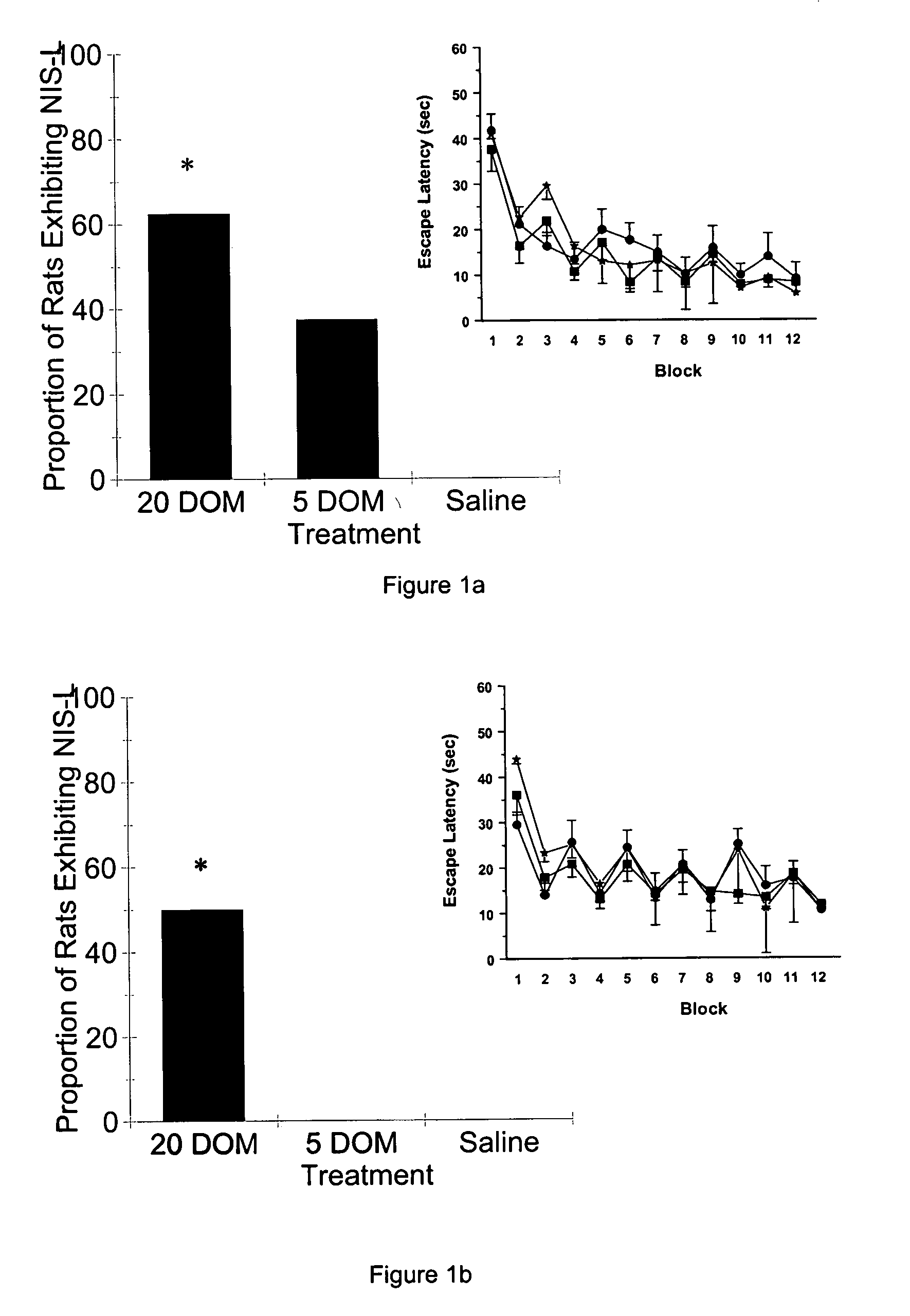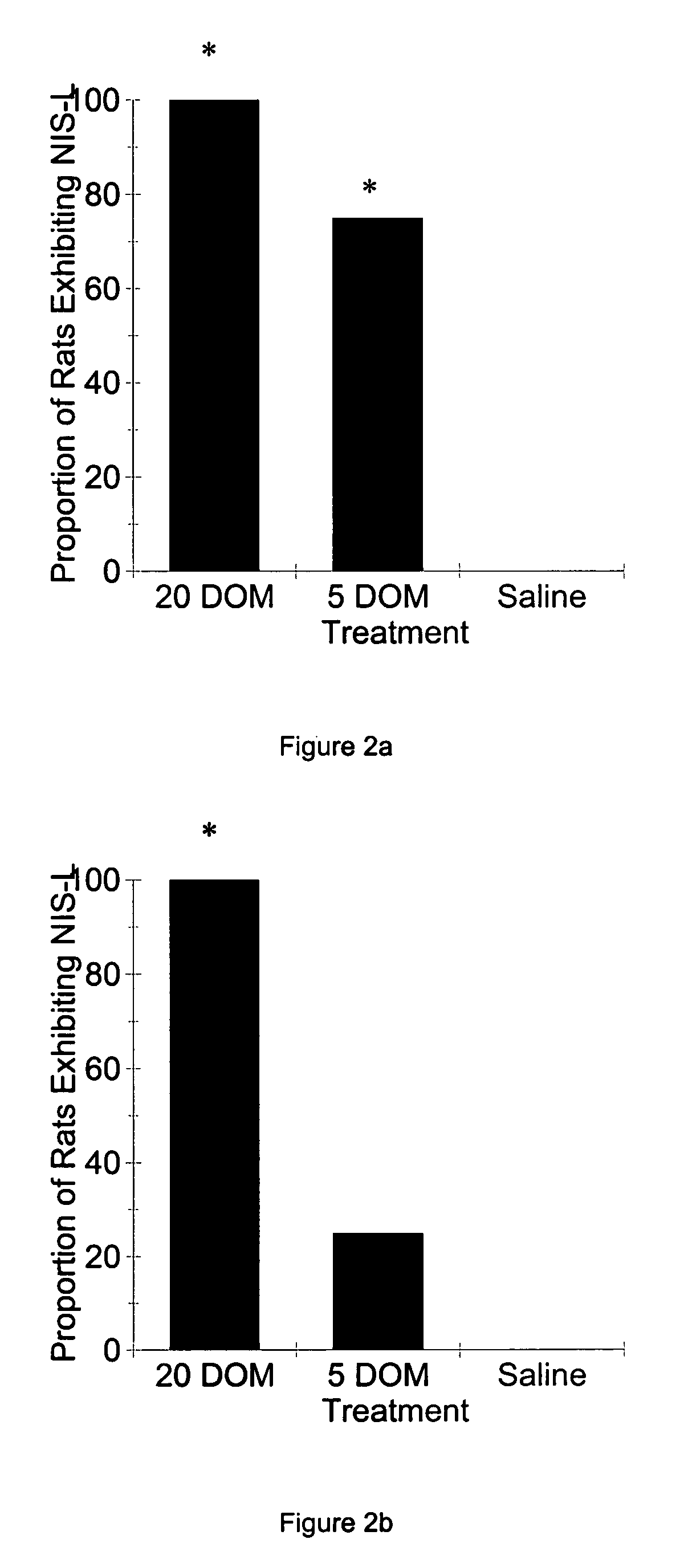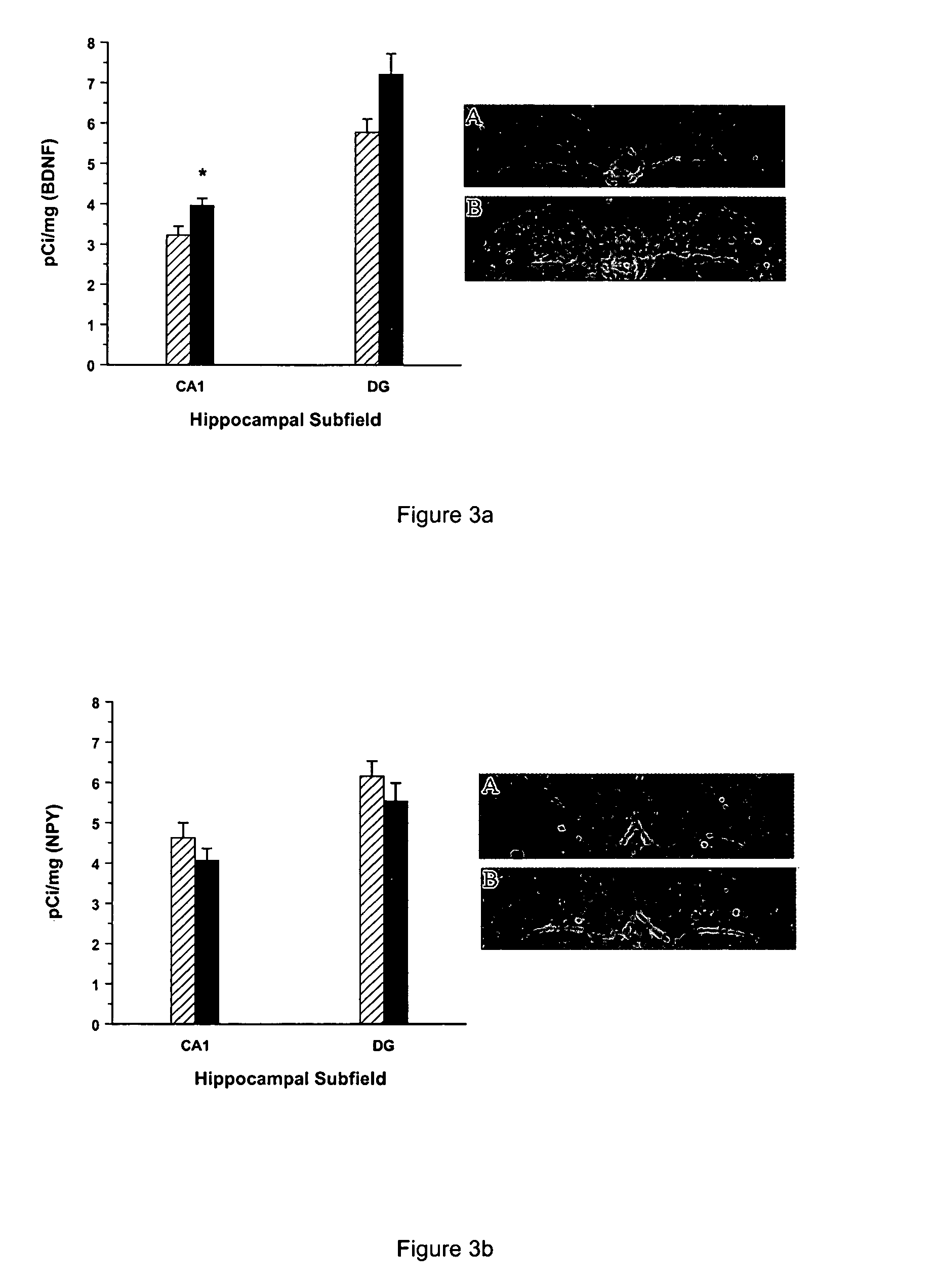Developmental animal model of temporal lobe epilepsy
a developmental animal model and epilepsy technology, applied in the field of animal models for studying epilepsy, can solve the problems of limited utility, common treatment failure, and uncontrollable seizures in approximately one-quarter of the tim
- Summary
- Abstract
- Description
- Claims
- Application Information
AI Technical Summary
Benefits of technology
Problems solved by technology
Method used
Image
Examples
example 1
[0054]Within 24 hr of birth, offspring of untimed-pregnant Sprague Dawley rats (Charles River Laboratories, St. Constant, PQ) were culled to 10 pups / litter (5 males and 5 females). From post-natal day (PND) 8–PND 14, pups were weighed and given a single daily injection (s.c.; 10 ml / kg) of either saline, or 5 or 20 μg / kg domoic acid (DOM). These doses are well below those normally required to induce toxicity in animals of this age (Doucette, T. A. et al., Neurotox. Teratol. [2003] 25:473–479, and Doucette, T. A., et al., Neurotox. Teratol. [2000] 22:863–869). Pups were assessed daily until weaning (on PND 22) for overt signs of toxicity, and all pre- and post-weaning testing was conducted with the experimenter blind to treatment. All procedures were conducted in accordance with the guidelines of the Canadian Council on Animal Care. None of the pups displayed any signs of physical or behavioural toxicity prior to weaning and there were no significant differences in weight gain between...
example 2
[0056]Current animal models of epilepsy present with various neurochemical correlates. To determine whether the NIS-L syndrome was characterized by such changes, serum samples and brain tissue from a separate cohort of animals treated neonatally (PND 8–PND 14) with saline or 20 μg / kg DOM were collected. In this experiment, 50% of both male and female drug-treated animals displayed the NIS-L syndrome during NWM testing (males X2(1)=5.89, p2(1)=5.89, p<0.05) at 15 months, while no animals neonatally treated with saline displayed evidence of this syndrome during similar NWM testing.
[0057]One month following NWM testing (PND 480), brain tissue obtained following rapid dissection and freezing in liquid nitrogen was assayed for hippocampal brain-derived neurotrophic factor (BDNF) and neuropeptide Y (NPY) mRNA expression using in situ hybridization. DOM-treated rats showed a significant elevation in BDNF gene expression in the CA1 region (F(1,10)=7.88, pa). Similarly, elevated BDNF gene ex...
example 3
[0059]To determine whether the syndrome was specific to DOM, or could be elicited by other kainate-receptor agonists, a third study was conducted, parallel in design to Example 1, but using equi-efficacious doses of kainic acid (KA) (saline, 25 and 100 μg / kg KA) (Doucette, T. A., et al., Neurotox. Teratol. [2000] 22:863–869). Similar to DOM-treated rats, the NIS-L syndrome occurred only in those rats treated neonatally with drug (male, X2(2)=8.58, p2(2)=6.42, p2(2)=7.19, p25 KA: 62.5%; 100 KA: 33.3%). As with Example 1, no false-positives for NIS-L in saline-treated animals were noted in any test, confirming that drug treatment during early development was responsible for the NIS-L syndrome.
Behaviour Testing:
[0060]The Morris Water Maze (MWM) consisted of a circular tank measuring 1.5 m in diameter. Water temperature was maintained at approximately 21° C. and was made opaque by a layer of polypropylene pellets floated on the surface. Four points around the edge of the pool were arbit...
PUM
| Property | Measurement | Unit |
|---|---|---|
| temperature | aaaaa | aaaaa |
| diameter | aaaaa | aaaaa |
| diameter | aaaaa | aaaaa |
Abstract
Description
Claims
Application Information
 Login to View More
Login to View More - R&D
- Intellectual Property
- Life Sciences
- Materials
- Tech Scout
- Unparalleled Data Quality
- Higher Quality Content
- 60% Fewer Hallucinations
Browse by: Latest US Patents, China's latest patents, Technical Efficacy Thesaurus, Application Domain, Technology Topic, Popular Technical Reports.
© 2025 PatSnap. All rights reserved.Legal|Privacy policy|Modern Slavery Act Transparency Statement|Sitemap|About US| Contact US: help@patsnap.com



